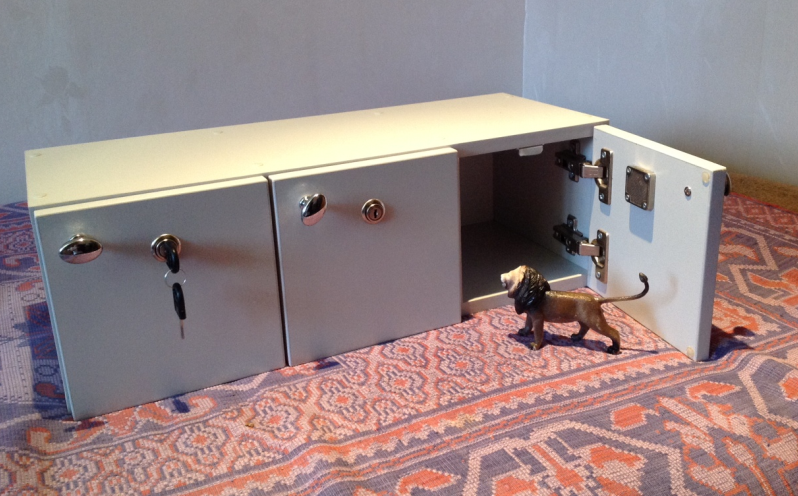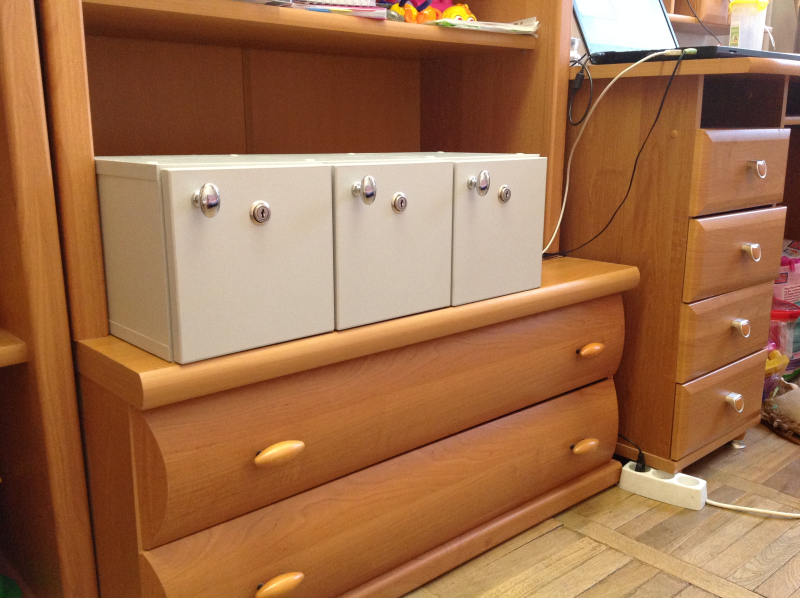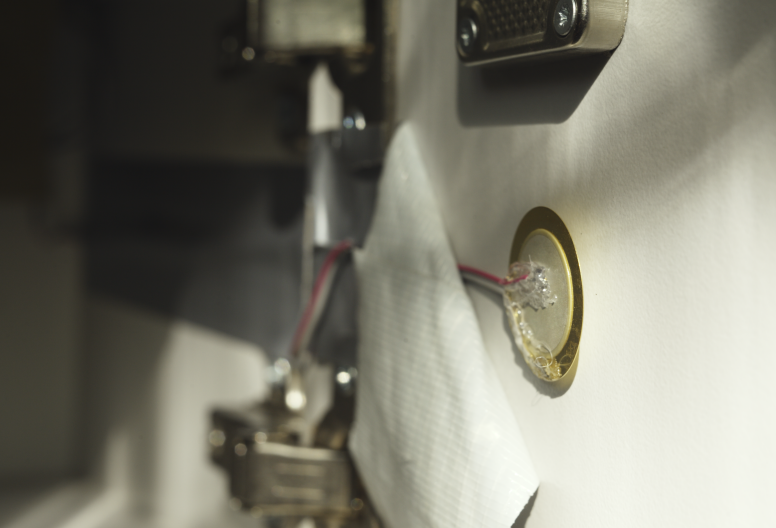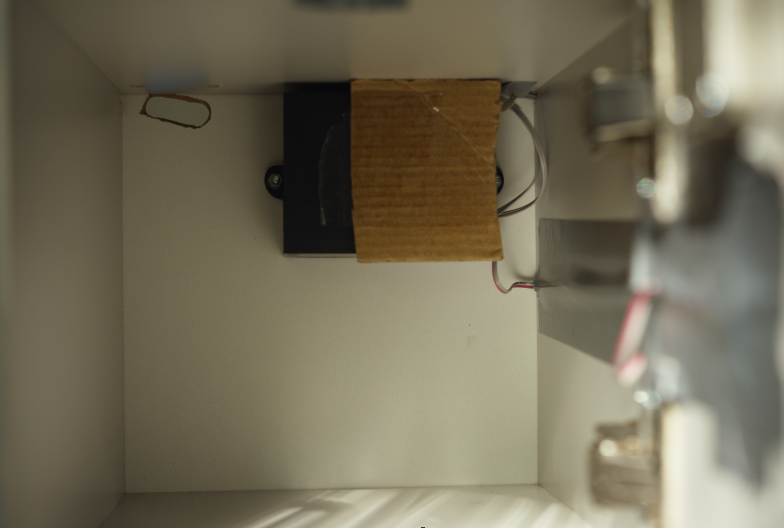Toy on Arduino: Knock Knock Locker

Year-old children love lockers: open and close doors, hide toys and then suddenly find them there. The idea was for parents to hide a toy in the locker, and the child should have guessed who lives there by the sound from the locker. To listen to the sound, the child must knock on the door.
At first, I tested the idea without electronics - with the help of a cardboard box and a book with animal sounds - more precisely, I only had a panel with the sounds from the book. Animal figures were hiding in the box, the child was tapping the box, I pressed the button with the voice of the animal, the child tried to guess and opened the box.
Book with a sound panel:

Testing was successful, and we started development.
Development
The locker was ordered at the fiberboard workshop. The result was a bulky “bunker” that had to be fixed to the surface with double-sided tape, but the equipment worked.

Contact microphones were used as a knock sensor. From Arduino Uno, the signal picks up a Pure Data script that plays a sound file.
Contact microphones:

Microphone on the back of the door:


Box with the Arduino board in the far corner. Cardboard - so that the bulb does not attract the attention of the child:

Now try to knock:
Experiments on children
We approach the most interesting. The first reaction to the sounds from the locker was wary, but with a great deal of curiosity. Children intuitively understand how knocking can be used as a call signal and after a few minutes the acquaintance has passed into the phase of the game.
The toy can be used for a variety of scenarios: guessing the sounds of animals, musical instruments, words, letters.
It would seem that the same thing can be done for the tablet. In fact, it’s important for children to touch things with their hands — open doors, feel the weight of objects. Fine motor skills are very important for children's development and cannot be replaced with mobile poking.
